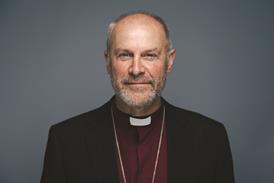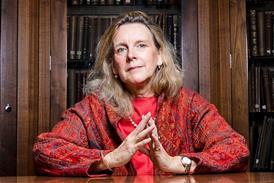Mike Bickle, founder of the International House of Prayer (IHOP) and a leading figure in the New Apostolic Movement (NAR), faces accusations of sexual misconduct. But what is NAR and where does it come from? Dr John Maiden explains

Another shock for charismatic Christians hit the headlines this month.
Mike Bickle, founder of the International House of Prayer (IHOP) in Kansas City was accused by a group of former leaders of sexual misconduct, based on the testimonies of several victims. Bickle has denied the allegations, but in a recent statement, IHOP has confirmed that an outside law firm has been instructed to carry out a full investigation into the claims. In the meantime, Bickle has stepped down from public ministry.
Bickle has been a leading figure in a loose, diverse movement in global Christianity known as the New Apostolic Reformation (NAR). You may have seen negative references to NAR on social media. This is, in part, due to serious accusations of moral misconduct against some key ‘apostles’. For others, NAR is controversial because of its theology, or the fact its leaders such as Paula White-Cain and Lance Wallnau have been vocal supporters of former US president Donald Trump.
The Toronto Blessing was an important catalyst for various apostolic networks
For those with some awareness of Church history, it might seem an exaggeration to describe this movement as a ‘reformation’. But make no mistake, in recent decades NAR - often with remarkable growth and expansive media - has changed the face of Christianity. With this, comes a revolution in the way many churches think about authority.
Where did NAR come from?
In its origins and contemporary form, the New Apostolic Reformation has tended to attract Pentecostals and evangelicals who have been seeking a more authentic expression of New Testament Christianity. Their views of end times have usually emphasised the restoration of the Church to more biblical patterns of practice and leadership, and a resurgence of Christianity in society and the public square.
The roots of the movement stretch back many years. But for now, let’s start with the American Latter Rain revival of 1948, when a group of Christians became convinced that Pentecostalism had lost touch with New Testament authenticity – and lost its spiritual power as a result. They taught that the “latter rain” described in Joel 2:23 referred not to the Day of Pentecost, as recorded in Acts 2, but to an end times revival.
This included the idea that Spirit-empowered Christians (sometimes referred to as “Joel’s Army” in NAR) would lead a victorious Church into revival and renewed influence in the world. Leadership of this resurgent Church would come from apostles and prophets, attuned to the “new thing” God was doing and not bound by traditional structures.
As I describe in my book Age of the Spirit: Charismatic renewal, the Anglo-world and global Christianity, 1945-1980 (Oxford University Press) the Latter Rain revival faded away, but its key principles were given a second life by the charismatic renewal of the 1960s and 1970s. While some charismatics were committed to renewing their denomination – Anglican, Baptist, Catholic etc – others emphasised restorationist thinking. In the UK, the US and many other locations, independent new and house church networks emerged and this gave birth to large church movements still active today, such as Newfrontiers, Pioneer and Vineyard.
Controversies and reformation
In the United States, in particular, some – but by no means all – practiced ‘shepherding’, a kind of pyramid of power and accountability whereby authority (usually male) would flow down from a leading national (or global) figure to local pastors, and even through a chain of pastoral command between congregants.
The shepherding movement eventually blew up in an explosion of allegations of coercion and abuse. However, the rise of independent churches and networks – many of which were flourishing – led by apostolic and prophetic figures was here to stay.
In the 1980s, the movement was given a further boost by the rise of new leaders, centred around figures such as church growth guru C Peter Wagner. These placed even greater emphasis on the role of prophecy – including concerning politics and the life of the nation – and Dominionism. This is the idea that, through the practice of spiritual warfare, the Church would exercise power over the ‘seven mountains’ of religion, entertainment, business, education, family, government and media.
Leaders such as Bickle were enormously influential, teaching that a “Joel’s Army” would be victorious for Christ, and giving a platform to high profile, and sometimes highly controversial, prophets such as Paul Cain and Bob Jones.
Make no mistake, the New Apostolic Reformation changed the face of Christianity
Towards the end of the 1990s, NAR as we might recognise it was taking shape. The Toronto Blessing of 1996, seen as a global revival moment by many, was an important catalyst for various apostolic networks, including Randy Clark’s Global Awakening, Ché Ahn’s Harvest International Ministries and Heidi and Rolland Baker’s Iris Ministries.
The reach of such networks is remarkable. Global Awakening, for example, has a network of over 600 congregations worldwide. Iris Global (as it is now called) claims to have planted over 10,000 churches. Their radical leadership and teachings – combined with their sheer numerical growth – suggests that ‘reformation’ may indeed be an appropriate description of this new global Christian movement.
For and against
Those who support NAR argue that the movement’s adherence to biblical patterns of authority is a strength; in particular, the leadership of apostles and prophets anointed and guided by the Holy Spirit. There are pragmatic arguments, too, for more centralised forms of leadership, just as there might be in business or politics. Does the leadership of apostles increase dynamism and responsiveness? Or to put it bluntly: can they better get things done?
At the same time, some wonder about potential blind spots. What about succession, for example? There are plenty of thriving Christian networks that have struggled to maintain viability when the original leader, often highly charismatic and beloved, is no longer in charge.
Then, from a theological point of view, some have asked whether vesting significant authority in one person reflects a realistic view of human fallenness. Furthermore, when an individual or individuals are regarded as anointed by God, how easy is it to challenge their authority or correct them? Might the tendency in NAR to centralise authority – and potentially place people on a pedestal – give leaders more opportunity to act unethically or immorally, and simultaneously make it harder for those around them to ask difficult questions?
Tragically, every time a NAR leader fails, difficult questions about the wider movement - and about human nature, spiritual anointing and Church accountability – are bound to be asked.

































No comments yet